Client Services Management vs Customer Service A Clear Guide

Client services management and customer service are two distinct approaches to maintaining a business relationship. Client services management focuses on nurturing long-term partnerships by offering tailored solutions and strategic guidance. In contrast, customer service addresses immediate needs, often through transactional interactions. For example, clients typically engage through formal agreements and contribute to sustained profits, while customers drive short-term revenue through single purchases.
Understanding the importance of these differences can transform your business strategy. Companies like Sobot, which provide tools for managing both client and customer interactions, demonstrate how aligning your approach with these distinctions can enhance satisfaction and operational efficiency.
Understanding Client Services Management
Definition and Core Objectives
Client services management refers to the strategic approach businesses use to build and maintain long-term relationships with their clients. Unlike customer service, which often focuses on resolving immediate issues, client services management emphasizes delivering value over time. Its core objectives include ensuring the successful delivery of services, aligning solutions with client goals, and fostering trust through consistent communication.
Key functions of client services management include:
- Overseeing project execution to meet client expectations.
- Collaborating with internal teams to design tailored solutions.
- Educating clients about available services and industry trends.
- Monitoring service quality and implementing improvements.
For example, Sobot’s omnichannel solutions help businesses streamline communication across platforms, ensuring a seamless overall client experience. By integrating tools like AI-powered chatbots and unified workspaces, companies can enhance service delivery and strengthen client relationships.
The Role of Client Services in Long-Term Relationship Building
Client services play a pivotal role in fostering long-term relationships. By understanding client needs and offering personalized solutions, businesses can build trust and loyalty. Studies show that 81% of clients are more likely to repurchase from a trusted partner, while 71% prioritize trust over lower prices. This highlights the importance of relationship-building in driving repeat business.
Metrics such as customer retention rate and Net Promoter Score (NPS) are often used to measure the effectiveness of client services management. For instance:
| KPI Name | Description |
|---|---|
| Customer Retention Rate | Measures the organization's ability to retain customers, impacting revenue and profit. |
| Net Promoter Score (NPS) | Assesses customer satisfaction and likelihood of recommending the organization to others. |
| Customer Effort Score (CES) | Evaluates the effort required by customers to resolve issues, indicating service efficiency. |

Sobot’s solutions, such as its Voice/Call Center, enable businesses to track these KPIs effectively. Features like call tracking and real-time monitoring provide actionable insights, helping companies improve their client services strategies.
Examples of Client Services Management in Action
Real-world examples demonstrate how effective client services management can transform businesses. Companies like Netflix and Amazon have excelled by prioritizing convenience and personalization. Netflix’s intuitive interface and tailored recommendations enhance user satisfaction, while Amazon’s one-click purchasing and fast delivery foster loyalty.
Similarly, Sobot’s collaboration with OPPO showcases the impact of client services. By integrating chatbots and optimizing OPPO’s knowledge base, Sobot helped the company achieve a chatbot resolution rate of 83% and a 57% increase in repurchase rates. This highlights how tailored solutions can drive long-term success.
What Is Customer Service?
Definition and Core Objectives
Customer service refers to the direct assistance you provide to customers before, during, and after a purchase. Its primary goal is to ensure satisfaction by addressing questions, resolving issues, and delivering a positive experience. Unlike client services management, which focuses on long-term relationships, customer service often involves immediate, transactional interactions.
The objectives of customer service include:
| Objective | Description |
|---|---|
| Understanding Customer Expectations | Identifying what customers expect and require from services or products. |
| Competitor Analysis | Assessing how well your company and competitors meet customer expectations. |
| Development of Standards | Creating service or product standards based on survey findings. |
| Trend Analysis | Monitoring trends over time to enable timely actions. |
| Establishing Priorities | Setting priorities and standards to evaluate goal achievement. |
By focusing on these objectives, you can create a service framework that meets customer needs effectively.
Addressing Immediate Needs Through Customer Service
Customer service plays a critical role in addressing immediate needs. For instance, when a customer encounters a problem with a product, they expect quick and efficient support. Studies show that 86% of customers are likely to switch companies after just one bad experience. Additionally, 33% feel most frustrated when they have to wait on hold. These statistics highlight the importance of providing timely and contextual support.
You can enhance customer support by implementing tools like Sobot’s Voice/Call Center. Features such as intelligent IVR and smart call routing ensure faster responses, reducing wait times and improving satisfaction. Moreover, self-service options like knowledge bases allow customers to find answers instantly, addressing their needs without delay.
Examples of Customer Service in Everyday Business
Many businesses excel in customer service by personalizing interactions and anticipating customer needs. For example:
- Amazon recommends products based on your previous purchases and browsing history.
- Netflix suggests shows tailored to your viewing habits.
These strategies not only improve satisfaction but also foster loyalty. Research indicates that increasing customer retention by just 5% can boost profits by 25% to 95%. Personalizing interactions through tools like Sobot’s omnichannel solutions can help you achieve similar results. By integrating customer data across platforms, you can deliver seamless and proactive support, enhancing the overall experience.
Client vs Customer: Key Differences in Service Management

Relationship Focus: Long-Term vs. Short-Term
The distinction between client and customer relationships lies in their duration and depth. Clients often engage with businesses for extended periods, seeking tailored solutions that align with their strategic goals. These relationships require trust, consistent communication, and a focus on mutual growth. For example, a client might sign a multi-year contract for consulting services, expecting ongoing support and expertise.
On the other hand, customers typically interact with businesses for short-term needs. Their focus is on immediate satisfaction, such as purchasing a product or resolving a quick issue. While customer interactions may be brief, they still play a vital role in driving revenue and brand loyalty.
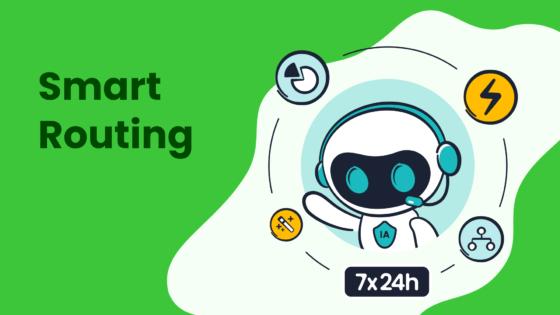
Sobot’s solutions cater to both types of relationships. For long-term clients, tools like the Voice/Call Center provide features such as call tracking and real-time monitoring, ensuring consistent service quality. For short-term customer needs, Sobot’s AI-powered chatbots offer instant resolutions, enhancing satisfaction during transactional interactions.
Service Strategies: Proactive vs. Reactive
Service strategies differ significantly between client and customer management. Proactive strategies anticipate needs and address issues before they arise. This approach improves experiences, saves time, and builds loyalty. For instance:
- Businesses using proactive service often identify potential problems early, preventing escalations.
- Customers appreciate proactive communication, with 89% stating it leads to better experiences.
- Proactive strategies can reduce support costs by minimizing repetitive inquiries.
Reactive strategies, however, require customers to initiate contact. While this approach resolves immediate concerns, it can lead to delays and frustration. Studies show that delayed resolutions negatively impact satisfaction, with 33% of customers citing long wait times as their biggest frustration.
Sobot’s omnichannel solutions excel in proactive service delivery. Features like intelligent IVR and smart call routing ensure faster responses, while AI-driven insights help businesses anticipate customer needs. By integrating proactive tools, you can differentiate your business and enhance overall engagement.
Engagement Models: Personalized vs. Standardized
Engagement models define how businesses interact with clients and customers. Personalized models focus on tailoring experiences to individual needs. This approach fosters deeper connections and improves satisfaction. For example, healthcare organizations that personalize patient interactions see better outcomes and lower costs. Similarly, businesses that personalize customer journeys often achieve higher loyalty rates.
Standardized models, in contrast, emphasize consistency and efficiency. They ensure uniform service delivery across all interactions, which is essential for maintaining quality at scale. Combining personalization with standardization creates a balanced approach, meeting individual expectations while ensuring operational efficiency.
Sobot’s unified workspace supports both engagement models. It consolidates customer data, enabling personalized interactions while maintaining consistency across channels. By leveraging tools like Sobot’s Voice/Call Center and omnichannel solutions, you can deliver high-value experiences that resonate with both clients and customers.
Business Impact: Growth and Retention
Growth and retention are critical for any business aiming to thrive in a competitive market. Both client services management and customer service play pivotal roles in achieving these goals, but their impacts differ based on their focus and strategies.
How Client Services Management Drives Growth and Retention
Client services management focuses on building long-term partnerships. This approach ensures that clients receive tailored solutions aligned with their goals. When clients feel supported and valued, they are more likely to continue their relationship with your business. This loyalty translates into consistent revenue streams and opportunities for upselling or cross-selling additional services. For example, a consulting firm that provides personalized strategies for a client’s business growth fosters trust and ensures repeat contracts.
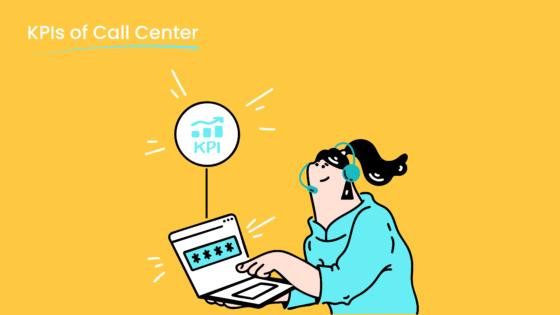
Sobot’s Voice/Call Center exemplifies how technology can enhance client success. Features like call tracking and real-time monitoring allow businesses to maintain high service quality. These tools help you identify areas for improvement, ensuring that clients remain satisfied and engaged over time.
The Role of Customer Service in Retention
Customer service directly influences customer satisfaction and loyalty. Exceptional service makes customers feel valued, reducing the likelihood of churn. Studies show that 86% of customers are willing to pay more for a better experience. By addressing immediate needs efficiently, you can create a positive impression that encourages repeat purchases.
For instance, Sobot’s omnichannel solutions enable businesses to provide seamless support across multiple platforms. Whether through AI-powered chatbots or intelligent IVR systems, these tools ensure quick resolutions, enhancing the overall customer experience. This level of service not only retains customers but also turns them into brand advocates.
Key Benefits of Growth and Retention
- Increased Revenue: Retaining existing clients and customers costs less than acquiring new ones. Loyal clients often spend more over time, contributing to steady growth.
- Stronger Brand Reputation: Positive experiences lead to word-of-mouth referrals, which attract new customers and clients.
- Operational Efficiency: Long-term relationships allow you to understand client and customer needs better, enabling more efficient service delivery.
By leveraging tools like Sobot’s unified workspace, you can streamline operations and focus on delivering value. This approach not only drives client success but also ensures sustainable growth for your business.
Tip: Focus on both client services management and customer service to maximize growth and retention. Tools like Sobot’s Voice/Call Center can help you achieve this balance effectively.
Why Differentiating Client Services Management and Customer Service Matters
Optimizing Resources for Efficiency
Differentiating between client services management and customer service allows you to allocate resources more effectively. Each function has unique demands, and understanding these distinctions ensures that your team operates at peak efficiency. For instance, client service teams often focus on long-term strategies, requiring tools and processes that support relationship-building. On the other hand, customer service teams handle immediate concerns, necessitating quick-response systems.
Metrics like occupancy rate and agent schedule adherence can help you measure resource optimization. For example:
| Metric | Description |
|---|---|
| Occupancy Rate | Measures the percentage of time agents spend handling calls versus waiting for calls. |
| Agent Schedule Adherence | Assesses how closely agents stick to their scheduled work times and breaks. |
| Average Speed of Answer | Measures the average time it takes for an agent to answer a call. |
| After-Call Work Time | Quantifies agents' time spent on post-call tasks. |
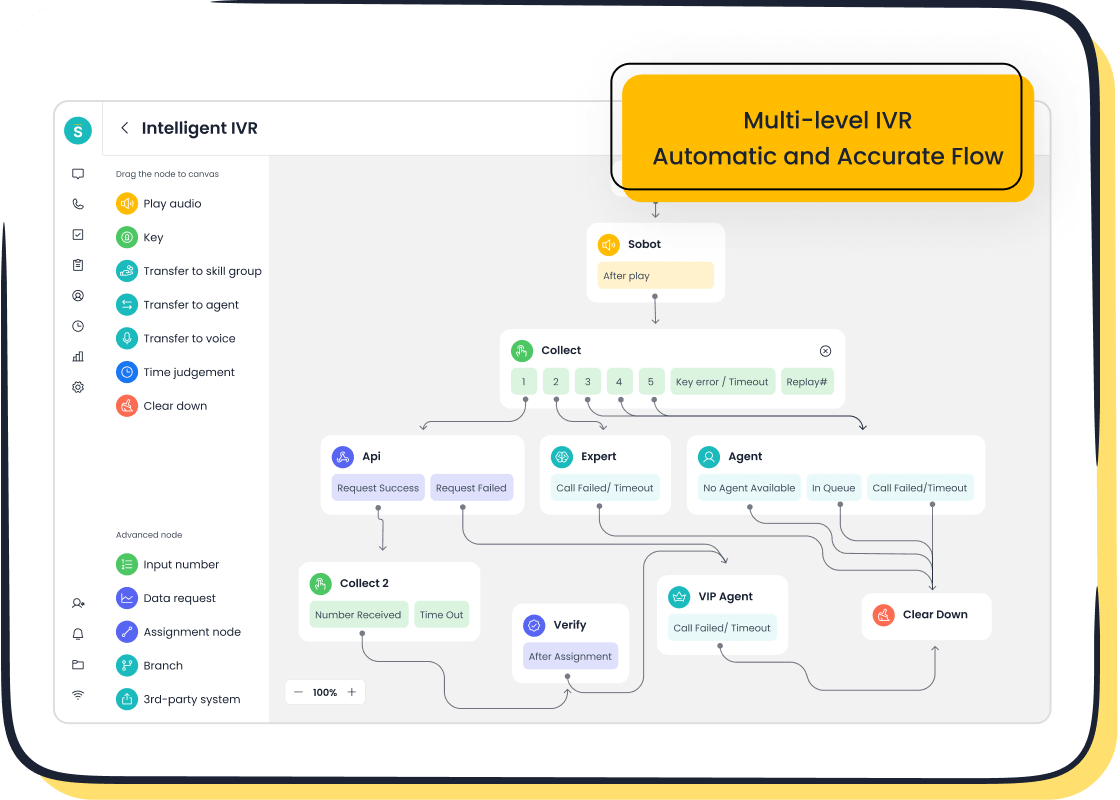
Using tools like Sobot’s Voice/Call Center can streamline these processes. Features such as intelligent IVR and real-time monitoring help reduce inefficiencies, ensuring that your team delivers exceptional service while maintaining operational balance.
Enhancing Satisfaction Across Clients and Customers
When you tailor your approach to meet the distinct needs of clients and customers, you enhance satisfaction across the board. Clients value personalized solutions that align with their goals, while customers prioritize quick and effective resolutions. By addressing these preferences, you create a service framework that fosters loyalty and trust.
Research highlights the link between service quality and positive outcomes like client commitment. For example:
- Optimized service functions improve client satisfaction, which is critical for retention.
- Clients’ perceptions of service processes and outcomes directly impact their loyalty.
Sobot’s omnichannel solutions provide a unified workspace that supports both client and customer interactions. This integration ensures seamless communication, enabling your team to deliver consistent and high-quality service. Regularly reviewing KPIs like customer satisfaction scores and response times can also help you identify areas for improvement, ensuring that your service strategies remain effective.
Strengthening Business Relationships for Long-Term Success
Strong business relationships are the foundation of long-term success. Differentiating between client services management and customer service allows you to build these relationships more effectively. Clients expect transparency, alignment in values, and clear documentation of work scope. Customers, meanwhile, seek positive experiences that encourage repeat business.
Key indicators of successful relationships include:
- Partner values and experience alignment.
- Metrics like response times and communication quality.
- Financial metrics such as ROI and customer satisfaction.
For example, Sobot’s collaboration with OPPO demonstrates the impact of tailored solutions. By integrating chatbots and optimizing OPPO’s knowledge base, Sobot helped the company achieve an 83% chatbot resolution rate and a 57% increase in repurchase rates. These results highlight how strategic service management can strengthen relationships and drive long-term growth.
Tip: Use tools like Sobot’s Voice/Call Center to track metrics and maintain high service standards. This proactive approach ensures that both clients and customers receive the attention they deserve, fostering loyalty and success.
Practical Tips for Managing Client Services and Customer Service
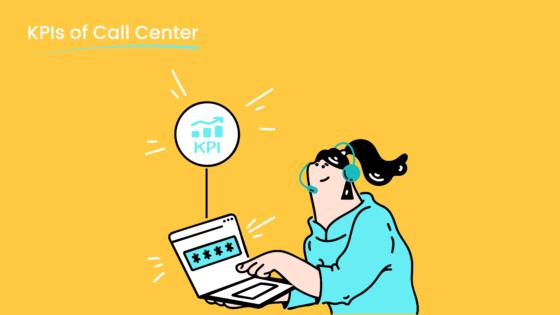
Leveraging Tools Like Sobot’s Voice/Call Center for Efficiency
Efficient tools can transform how you manage client services and customer service. Sobot’s Voice/Call Center offers features like intelligent IVR and real-time monitoring, which streamline communication and improve response times. For example, businesses using this tool have reported a 20% reduction in inbound discussion volume and a 96% increase in positive feedback. These results highlight how technology can enhance both efficiency and satisfaction.
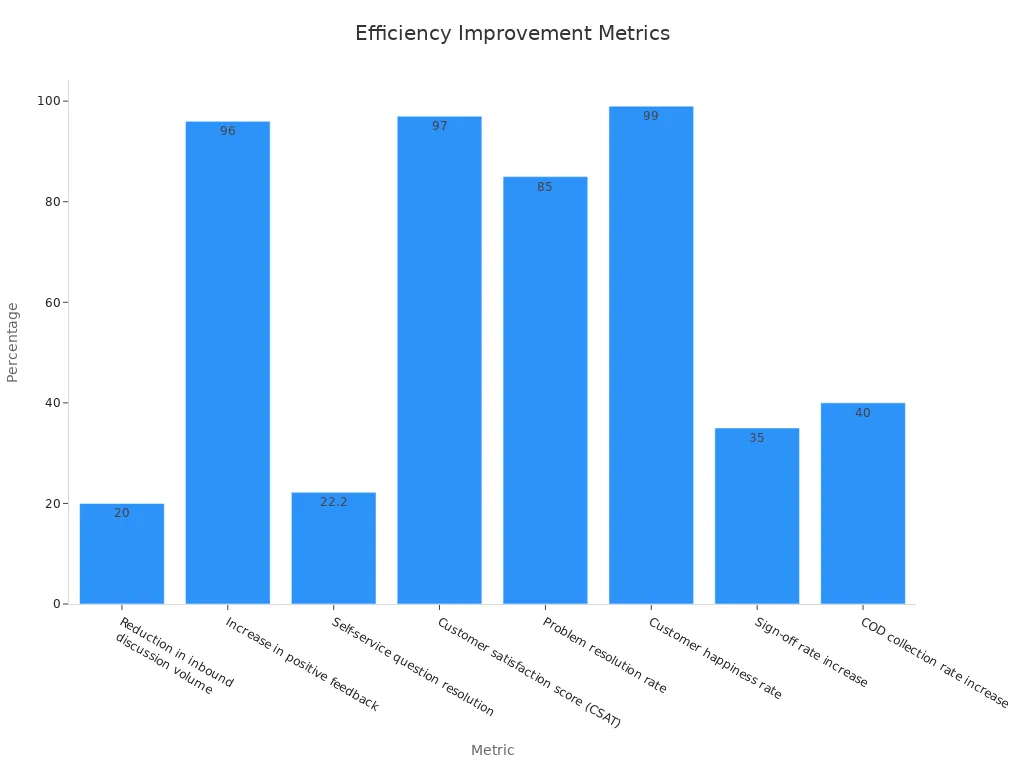
To maximize efficiency, consider these strategies:
- Set up automated thank-you messages or follow-up reminders to show clients you care.
- Use chatbots to handle basic inquiries, freeing agents for complex issues.
- Monitor interactions in real time to address problems promptly.
These practices not only improve operational efficiency but also foster customer loyalty by ensuring consistent, high-quality service.
Training Strategies for Client and Customer Service Teams
Well-trained teams are the backbone of exceptional service. To enhance your team’s capabilities, focus on these key areas:
- Develop a customer-centric mindset.
- Build product knowledge to answer questions confidently.
- Strengthen problem-solving and conflict resolution skills.
- Improve time management to handle tasks efficiently.
For example, teaching agents to de-escalate conflicts can turn negative experiences into positive ones, boosting customer loyalty. Regular training sessions and role-playing scenarios can help your team stay prepared for real-world challenges. By investing in training, you empower your team to deliver outstanding service that meets both client and customer expectations.
Aligning Service Functions with Business Goals
Aligning your service functions with business goals ensures that every interaction contributes to your company’s success. For instance, integrating tools like Sobot’s omnichannel solutions can help you unify customer data, enabling personalized support that drives satisfaction and retention. Metrics such as customer satisfaction scores (CSAT) and problem resolution rates provide valuable insights into performance.
| Benefit of Alignment | Description |
|---|---|
| Establishing a solid HR investment rationale | Clear alignment allows for better evaluation of financial and effort investments in HR initiatives. |
| Improving HR focus, performance, and productivity | Ensures HR employees work towards common business objectives, enhancing engagement and performance. |
| Impact on business outcomes | High HR goal alignment correlates with improved revenue, customer satisfaction, and overall performance. |
By aligning service functions with your goals, you create a cohesive strategy that strengthens customer loyalty and drives long-term growth.
Understanding the distinctions between client services management and customer service is essential for optimizing your business strategy. Client services management focuses on long-term relationships and proactive engagement, while customer service addresses immediate needs through reactive support. Both functions play a vital role in driving business success. For instance:
- Long-term client relationships lead to higher retention rates and increased revenue.
- Immediate customer support fosters trust and satisfaction, encouraging repeat business.
By leveraging tools like Sobot’s Voice/Call Center, you can streamline operations and enhance both client and customer experiences. These solutions, combined with a dedicated customer success manager, ensure your business delivers value consistently. Prioritizing both functions not only strengthens relationships but also drives sustainable growth.
Tip: Adopt Sobot’s omnichannel solutions to unify your service strategies and achieve measurable results.
FAQ
What is the difference between client services management and customer service?
Client services management focuses on building long-term relationships with clients through tailored solutions. Customer service addresses immediate needs, often through transactional interactions. For example, Sobot’s omnichannel solutions help businesses manage both functions effectively, ensuring seamless communication and satisfaction across all touchpoints.
How can Sobot’s Voice/Call Center improve customer service?
Sobot’s Voice/Call Center enhances customer service by offering intelligent IVR, smart call routing, and real-time monitoring. These features reduce wait times and improve resolution rates. Businesses using this tool report higher customer satisfaction and retention rates, making it a valuable asset for managing immediate needs.
Why is proactive service important in client services management?
Proactive service anticipates client needs and prevents issues before they arise. This approach builds trust and loyalty. For instance, Sobot’s AI-powered tools provide insights that help businesses deliver personalized solutions, ensuring long-term success and stronger client relationships.
How do omnichannel solutions benefit both clients and customers?
Omnichannel solutions unify communication across platforms, enabling seamless interactions. Sobot’s tools integrate customer data, allowing businesses to personalize support for clients and customers. This improves satisfaction, retention, and operational efficiency, making it easier to manage both types of relationships.
Can Sobot’s tools help measure service performance?
Yes, Sobot’s tools track key performance indicators like Net Promoter Score (NPS) and Average Speed of Answer. Features like call tracking and analytics provide actionable insights, helping businesses optimize client services management and customer service strategies for better outcomes.
See Also
Essential QMS Principles for Effective Call Center Operations
Top Strategies for Quality Management in Call Centers
Ten Essential Tips for Selecting Social Media Support Tools
The 2024 Guide to the Best Customer Service Tools
Comprehensive Guide to Omnichannel Solutions for Call Centers
